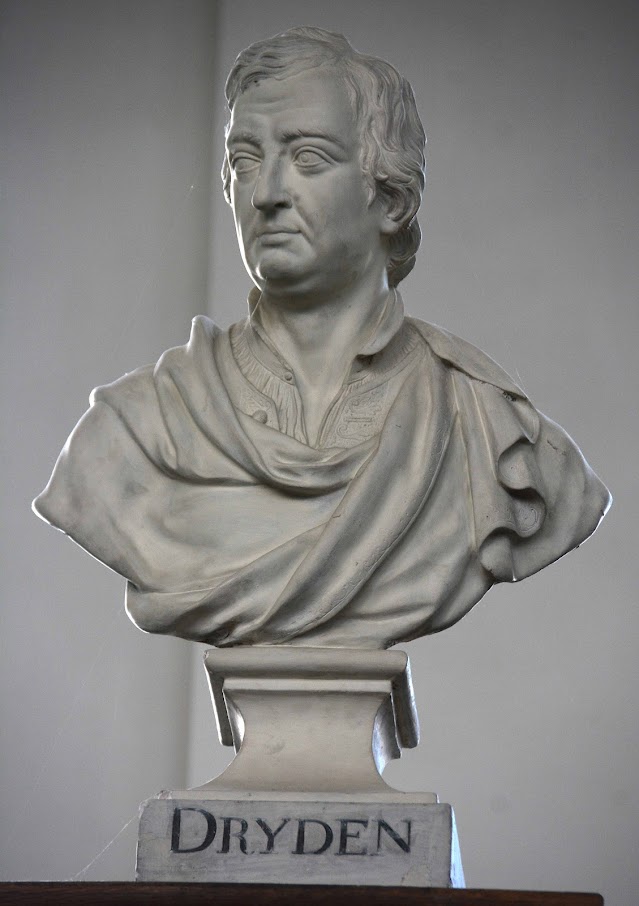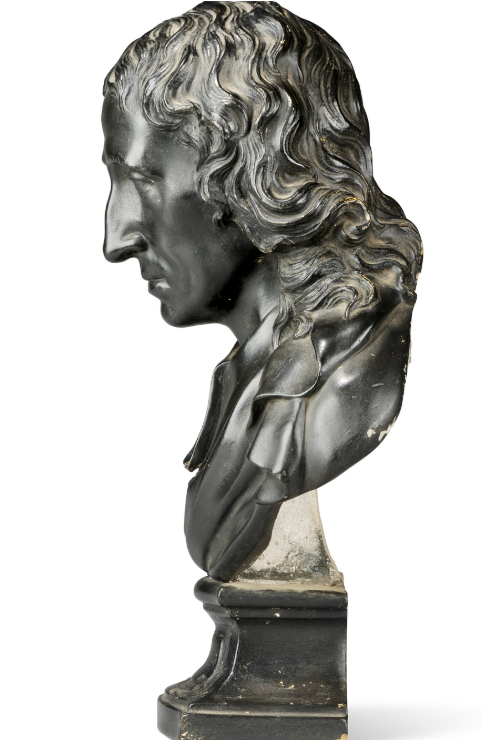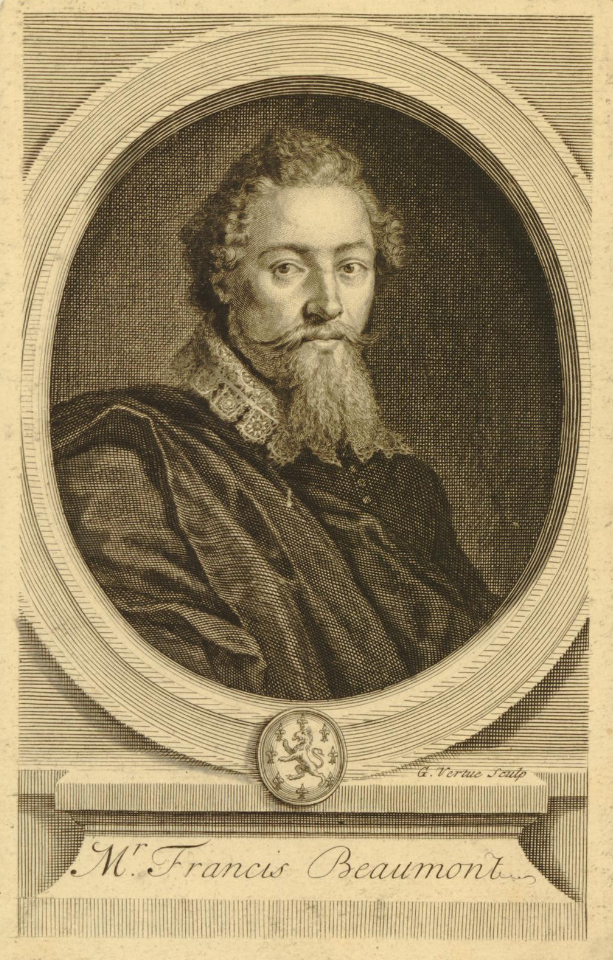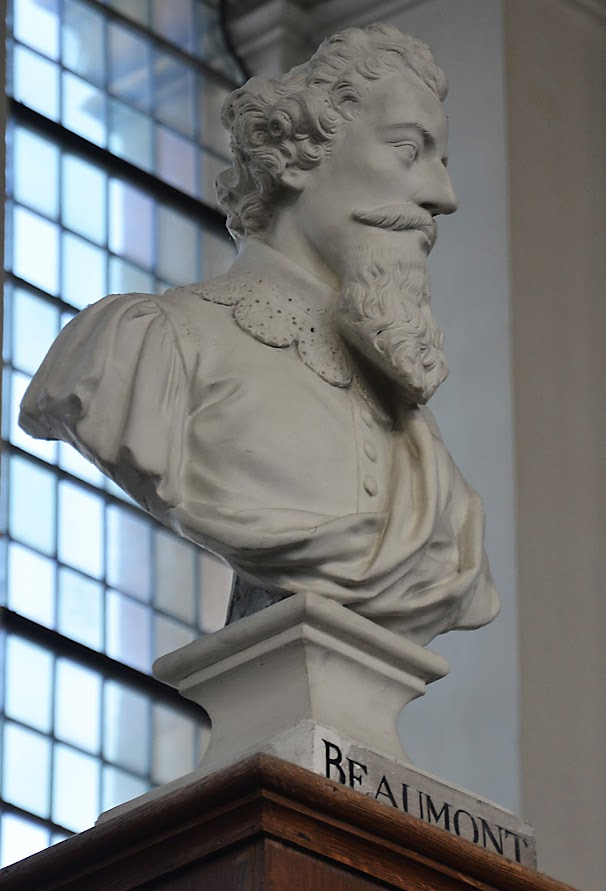Updated 18 July 2025.
Set of Eight Plaster Busts of Male Scholars.
Fairly safely Attributed to John Cheere.
From the Desmond Heyward Collection, Hasely Court, Oxfordshire.
Desmond Heyward d. 2019, purchased Hasely in 1981.
Certainly the crispness of the casting, the shape of the panelled socle with the slightly convex front and the detail of the embroidery etc suggest the authorship of Cheere.
I am unaware of any signed Cheere busts.
Bronzed plaster; each on an integral shaped rectangular
socle; inscribed, some indistinctly, with the name of each sitter including
Milton, Swift, Dryden, Newton, Virgil, Cicero and Pope.
Three quarter Life Size.
The smallest: 15 ¾ in. (40 cm.) high.
The largest: 17 ½ in. (44.5 cm.) high.
Christie's 8 June 2021.
https://www.christies.com/en/lot/lot-6318845
The Bust of John Dryden (1631 - 1700).
Derived from the bust on the Monument of 1720 in Westminster Abbey by Peter Scheemakers.
A version is at Stourhead -
The Full size (height approx 60 cms) Plaster Bust by John Cheere (1709 - 87) is in the Wren Library, Trinity College, Cambridge.
It has the square section socle rather than the convex panelled socle more typical of John Cheere used on the Christie's bust.
The Wren Library set of plaster busts were probably supplied by John
Cheere some time after 1753 - they are noted in a guide of 1763. Unfortunately
there is no record of their purchase.
The Trinity bust is one of
the set of 26 plaster busts supplied to the Wren Library and now consisting of 12 ancient
and 11 modern authors all placed on top of the bookcases in the Wren Library.
The Wimpole / Sarti bust is very obviously derived from the Cheere
bust -
The Cheere bust was later reproduced by Parker of the Strand c 1770 - 76) and later after about 1795 by Shout of Holborn, and then again about 1820 by Sarti (with the eared socle).
...................
A later bust of about 1830 with eared socle perhaps by Shout is at the Vyne NT.
................
An even later bust with the eared socle - Height 71 cms.
with a freshening up of green bronze paint by Pietro Sarti (1793 - 1868) is at Wimpole Hall, Cambs.
For an overview of the later plaster casts of the bust of Dryden see -
The Wren Library Trinity College Cambridge Plaster Bust of Dryden by John Cheere.
This bust and the Stourhead version are slightly different and probably earlier versions.
They both have more detail to the embroidery on the waistcoat
Photographed by the Author.
.....................
The Stourhead Version.
Height 58 cms.
Photographed by the Author.
...................
The Bust of Milton.
.........................
The Young Virgil.
A bust of the young Virgil - another version recently appeared in the Holkham Attic Sale held by Sworders of Mount Fitchett another is in the Wren Library, Trinity College, Cambridge.
Lot 28 - 11 February, 2025.
A version was supplied to Blickling Hall , Norfolk in 1745/7 (disappeared) see my post -
The bust is perhaps derived from an engraving.
Virgil engraving by Bonnart of Paris (c. 1645 - 82).
.............
Virgil by Pietro Santi Bartoli, frontispiece of P. Virgilii Maronis
Opera, 1724. Rome: Melchior Magius.
..................
For Comparison the Holkham Bust of the Young Virgil.
John Cheere.
With the typical Cheere panelled socle.
A plaster bust of young Virgil (70-19 BCE), 18th century,
mounted on a flared socle,
48cm wide, 30cm deep, 64cm high
This bust was listed in the Old Billiard Room at
Holkham in 1910. It also appears in the Holkham Archive's 'Inventory of
Statues', 1913.
This is a very fine cast first generation cast, which has survived without the frequent repainting that happens to many 18th century plaster busts and statues - it was easier to rtepaint than to clean them.
The Bust of Virgil by John Cheere in the Wren Library, Trinity College, Cambridge.
Height approx. 60 cms.
........................
The Bust of Jonathan Swift.
................................
The Bust of Alexander Pope.
.........................
Bust of Isaac Newton.
..............................
Francis Beaumont (1584 - 1616).
English Dramatist usually associated with Fletcher.
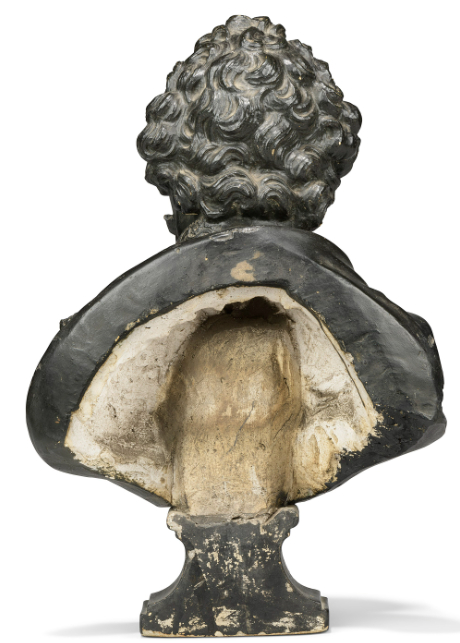
.......................
The Wren Library Bust of Francis Beaumont by John Cheere.
This bust is again derived from an engraving.
Francis Beaumont by George Vertue (after Cornelius Jonson?)
A reduced copy of this bust in black basalt was produced by Wedgwood.
Hoskins and Grant invoice of 1 January 1775 notes the supply
of busts, including a Galen and Hippocrates, and British worthies
such as Ben Jonson, ‘Sir W Reigle’ (Walter Raleigh), Fletcher and Beaumont, (£1 4s) Harvey and Newton.
This bill came to £23 17s 4d, and was signed ‘for self and partner Benj Grant’.
Info above from the very useful Life of Josiah Wedgewood by Eliza Metyard, pub. 1866. page 326.
Available on line - https://archive.org/details/lifeofjosiahwedg00mete/page/326/mode/2up?q=Beaumont&view=theater
It is not clear what size they were - but I suspect given the price they were reduced versions of the busts illustrated here.
Both Hoskins and Grant were both originally apprenticed to John Cheere- it is quite possible that they were pirated - the sale of the contents of Cheere's yard wasn't until 1788 - unfortunately no catalogue appears to have survived






